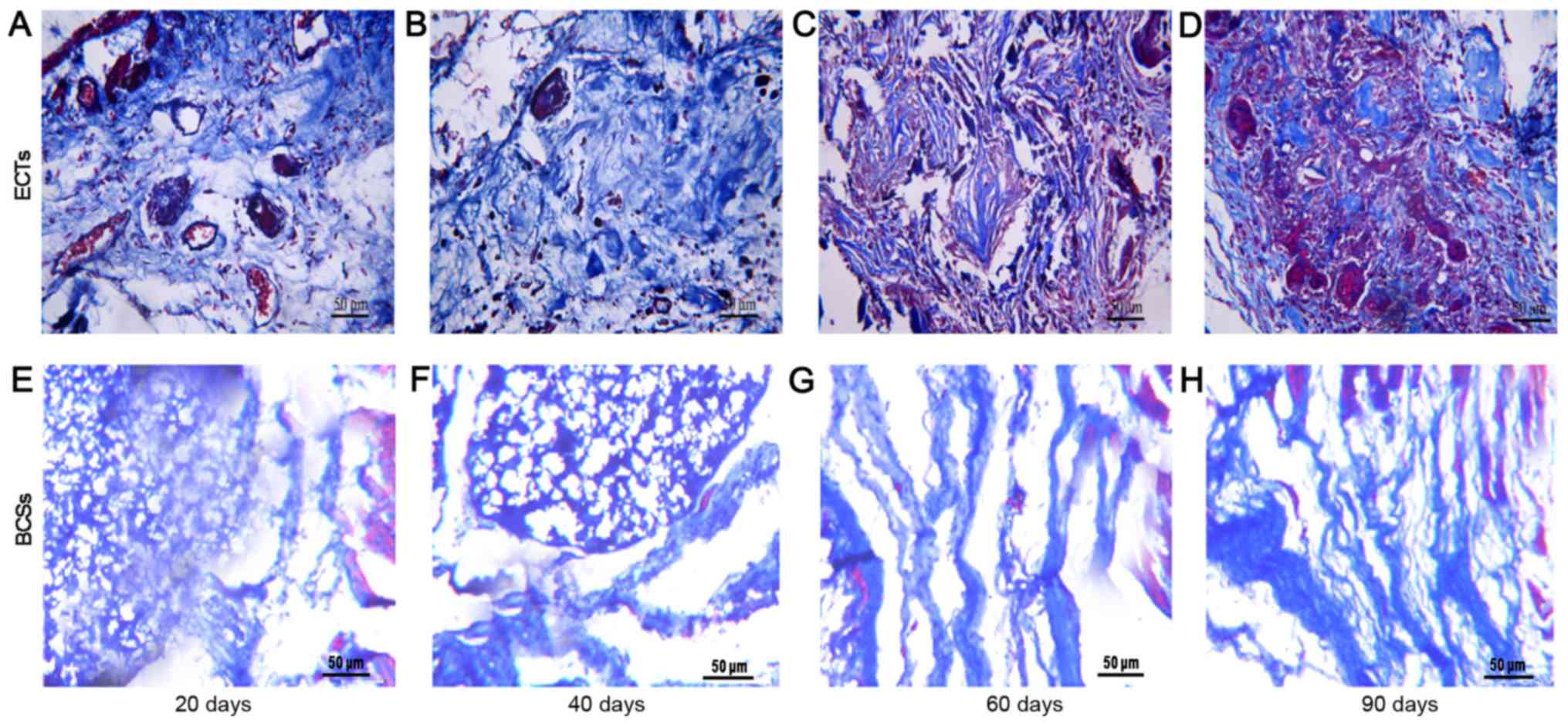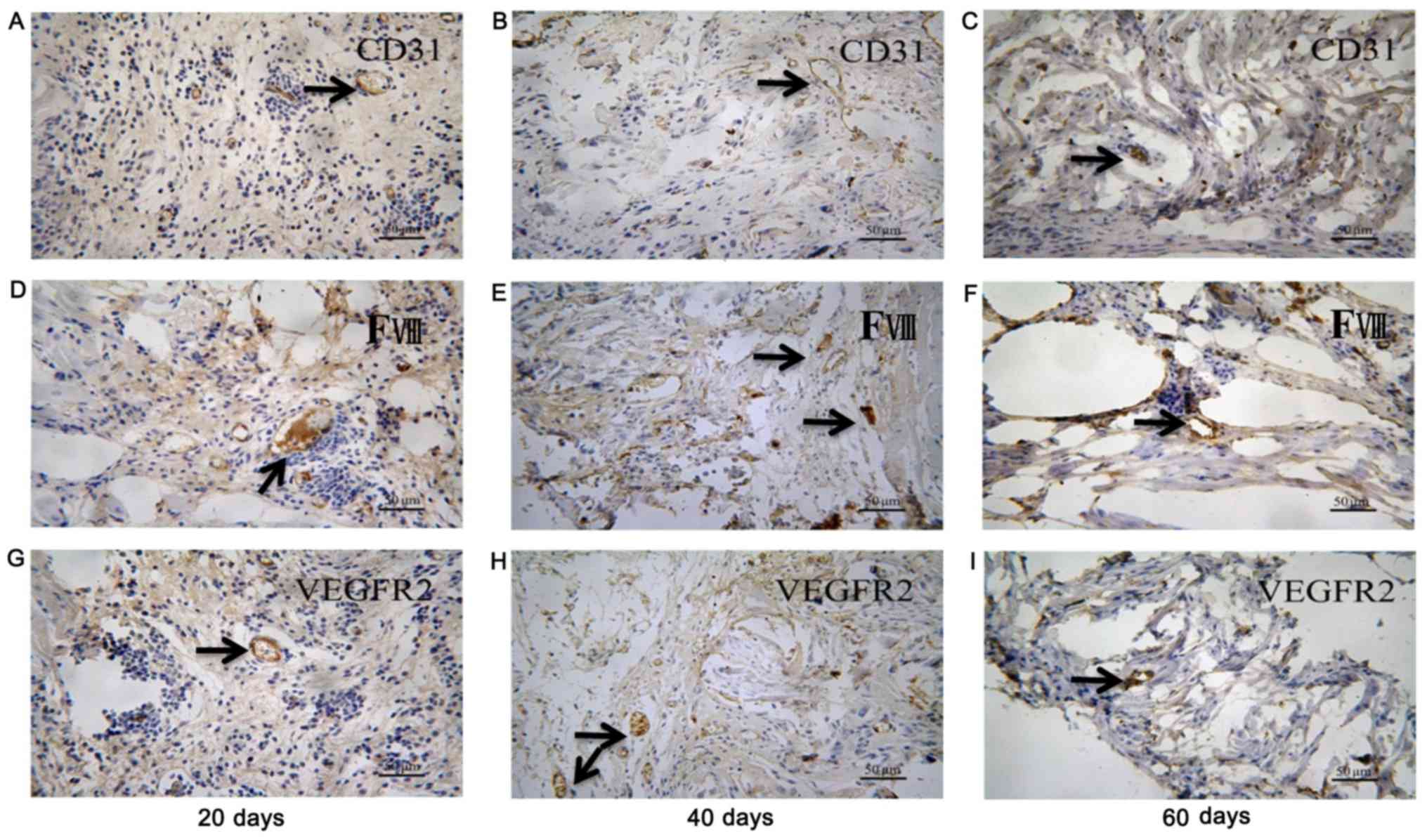Implantation of engineered conduction tissue in the rat heart
- Authors:
- Published online on: February 5, 2019 https://doi.org/10.3892/mmr.2019.9933
- Pages: 2687-2697
-
Copyright: © Zhang et al. This is an open access article distributed under the terms of Creative Commons Attribution License.
Metrics:
Total
Views: 0 (Spandidos Publications: | PMC Statistics:
)
Total PDF Downloads: 0 (Spandidos Publications: | PMC Statistics:
)
Abstract
Engineered conduction tissues (ECTs) are cardiac conduction tissues fabricated in vitro to allow for more precisely targeted in vivo transplantation therapy. The transplantation of ECTs may be ideal for the treatment of atrioventricular conduction block and could have a significant impact on the future application of biological pacemakers. However, there is little published information regarding the conduction function of ECTs in vivo. In the present study, ECTs were constructed by seeding cardiac progenitor cells (CPCs) into a collagen sponge and were then transplanted into animal hearts to determine whether they could act as an atrioventricular conduction pathway. The results demonstrated that the transplanted ECTs were adequately vascularized at the early stage of transplantation and could survive in the atrioventricular junction area of rats. A large number of myocardial tissue (≥29% of the new muscle fiber tissue formation area in the implanted ECTs) were observed by Masson's trichrome staining at 60 days post-transplantation. Positive staining for connexin-40, connexin-43, HCN2 and cTnT was exhibited during the period of 20 to 90 days post-transplantation. This result suggested that the transplanted ECTs formed gap junctions with the allogeneic myocardium and developed into cardiac conduction tissues with certain myocardial components. Electrocardiography (ECG) confirmed that there was a clear pre-excitation syndrome in the rats transplanted with ECTs during the period of 20 to 90 days post-transplantation. The recovery rate in the rats implanted with ECTs was 61.54% within 1 h following atrioventricular block, and the heart rhythm following recovery was close to normal. By contrast, the recovery rate was only 4.17% in the rats implanted with blank collagen sponges (BCSs), and none of the sham rats exhibited atrioventricular block recovery. In conclusion, ECTs can survive and mechanically integrate with the allogeneic myocardium following transplantation into rat hearts. An atrioventricular accessory pathway similar to Kent bundles could be established between the atria and ventricles of rats following implantation. It is suggested that ECTs may be a potential substitution therapy for atrioventricular conduction block.





















